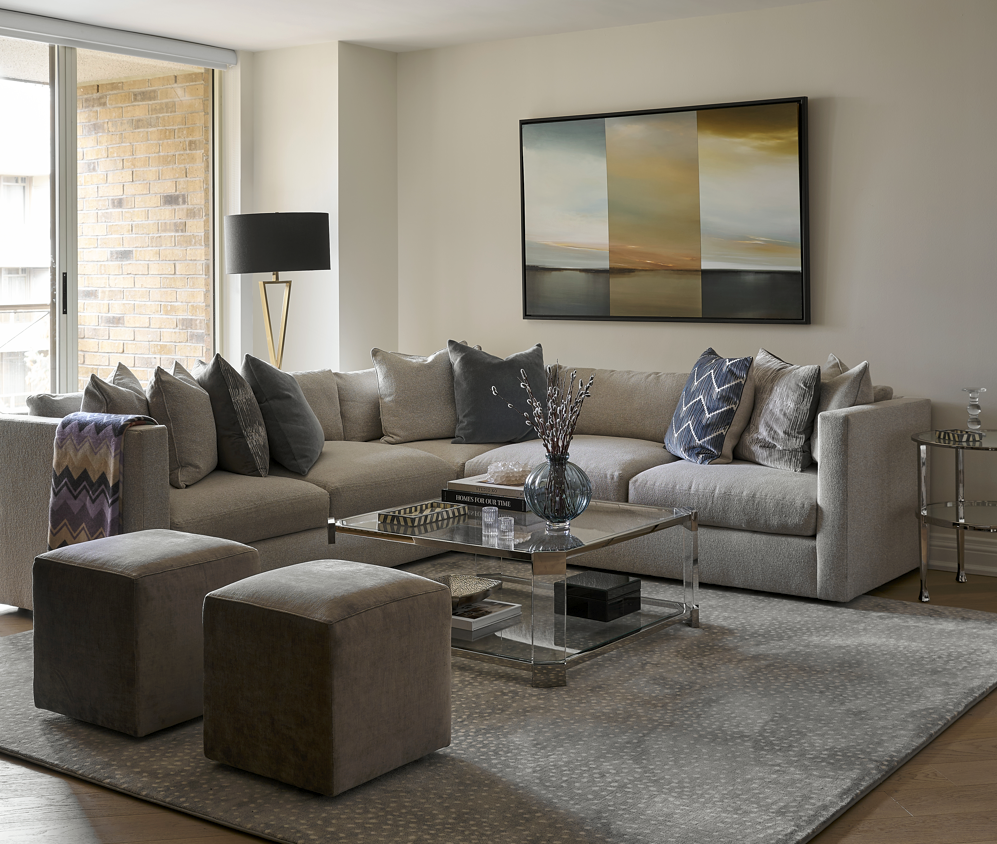
Rug Rules: How to Choose the Right Size & Style for Every Room
|
|
Time to read 3 min
|
|
Time to read 3 min
The entryway is your home’s first impression, setting the mood for what’s beyond. Whether you have a spacious foyer or a cozy hallway, thoughtful design choices can create a warm, welcoming, and practical space. Here are 8 entryway decor ideas that blend aesthetics with function.
Table of contents
A rug does so much more than cover your floors—it sets the tone for your entire room. Whether you're working with a tiny entryway or a sprawling living room, choosing the right rug size and style is crucial to getting your space right. This Homekin guide walks you through how to style rugs like a design expert.
Before you shop for a rug, think about what the space is used for. Different rooms require different materials and sizes.
Living Room: Choose a rug large enough to fit under at least the front legs of all seating furniture. This anchors the space and creates a cozy, defined seating area.
Dining Room: The rug should be large enough to accommodate the table and all chairs—even when they’re pulled out. A good rule: add 24"–30" to all sides of your table.
Bedroom: Go big or go layered. Ideally, a rug should extend at least 18"–24" beyond the sides of the bed. For queen and king beds, 8’x10’ or 9’x12’ rugs work best.
Entryway & Hallway: Use runners or smaller accent rugs to create a welcoming path and introduce texture.
All Legs On: Perfect for large living rooms—creates a luxurious, unified look.
Front Legs On: The most common and versatile layout, especially in medium spaces.
Floating Rug: Works well in smaller rooms or under statement pieces like coffee tables.
Under the Bed: Extend the rug beyond the foot and sides of the bed for a balanced layout.
Layered Look: Place a smaller statement rug over a large jute or neutral base rug—perfect for adding texture and contrast.
Choose the right rug based on how much foot traffic the room gets and the mood you want to create.
Wool: Durable, soft, and easy to clean—great for living rooms and bedrooms.
Cotton: Lightweight and affordable—perfect for kitchens or kids’ rooms.
Jute/Sisal: Natural texture and super durable—great for layering or high-traffic areas.
Synthetic: Budget-friendly and stain-resistant—ideal for families and pets.
Silk or Viscose: Luxe and soft—best for low-traffic or statement zones.



Vintage & Distressed: Adds warmth, character, and a lived-in vibe.
Geometric & Graphic: Creates bold contrast and suits modern interiors.
Neutral Textures: Layers effortlessly in minimal or Scandinavian spaces.
Floral or Persian-Inspired: Timeless elegance for classic interiors.
Playful or Abstract: Great for kids’ rooms or creative spaces.
Pro Tip: Let your rug complement the overall design theme, not clash with it. If your furniture is loud, keep the rug simple—and vice versa.
Too Small: A rug that’s too tiny can make your space look disconnected and unfinished.
Floating Rugs: Avoid “postage stamp” rugs that don’t touch any furniture.
Ignoring the Shape: Round rugs can be great in entryways or under circular tables.
Skipping a Rug Pad: Adds comfort, protects floors, and prevents slipping.
Homekin’s designers are here to help you source the perfect rug—size, style, material, and all. Book a consultation today to get a personalized plan that brings your space to life.
Try an 8’x10’ and tuck the front legs of your sofa and chairs onto it.
Yes! Use a large neutral base rug and layer a patterned or colorful one on top for added dimension.
Low-pile synthetic rugs are durable, easy to clean, and resistant to stains.
Whether you're refreshing a single space or redesigning your entire home, expert guidance can make all the difference. Need help? Book a consultation with Homekin’s designers today.











